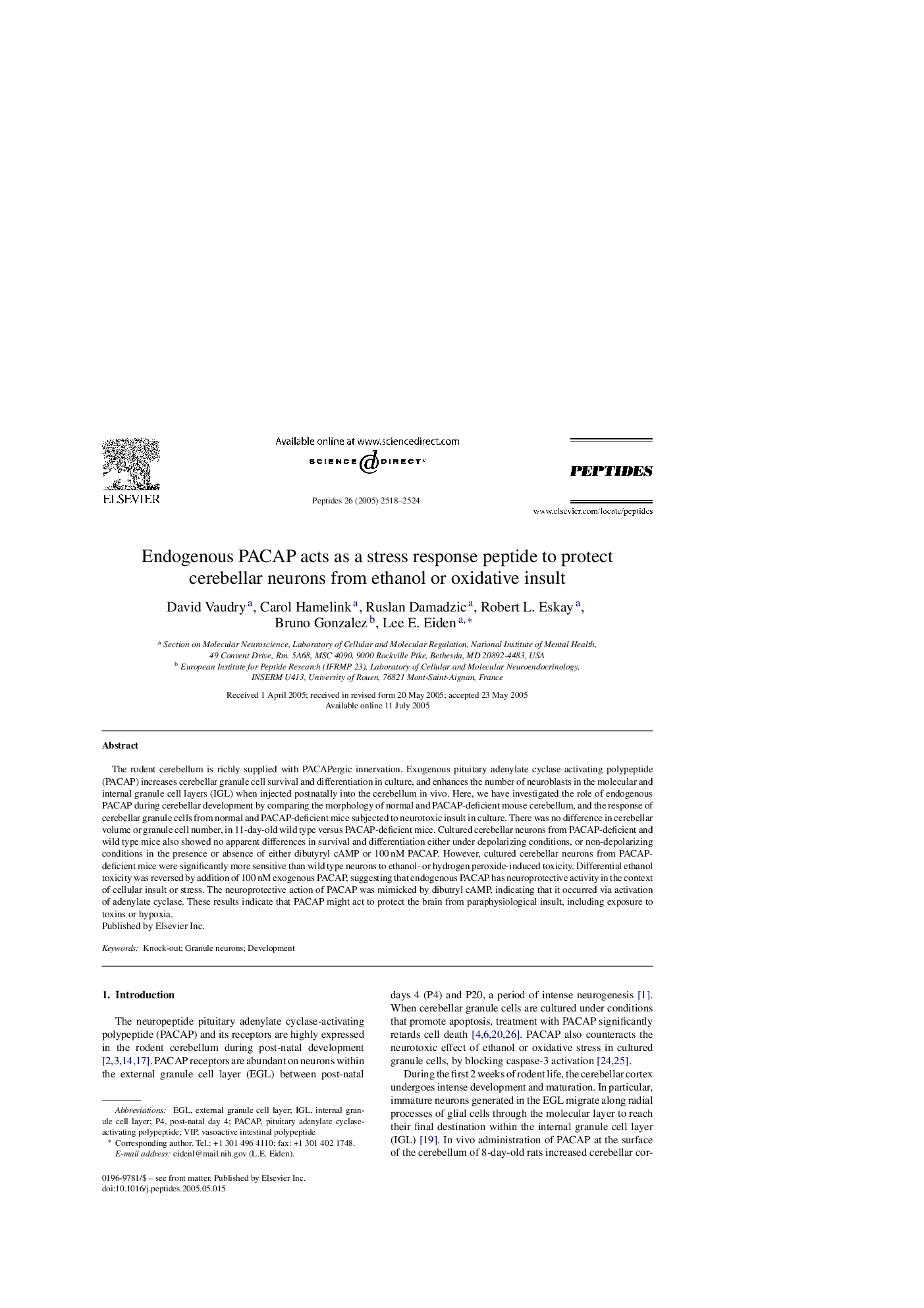| کد مقاله | کد نشریه | سال انتشار | مقاله انگلیسی | نسخه تمام متن |
|---|---|---|---|---|
| 2008699 | 1066439 | 2005 | 7 صفحه PDF | دانلود رایگان |

The rodent cerebellum is richly supplied with PACAPergic innervation. Exogenous pituitary adenylate cyclase-activating polypeptide (PACAP) increases cerebellar granule cell survival and differentiation in culture, and enhances the number of neuroblasts in the molecular and internal granule cell layers (IGL) when injected postnatally into the cerebellum in vivo. Here, we have investigated the role of endogenous PACAP during cerebellar development by comparing the morphology of normal and PACAP-deficient mouse cerebellum, and the response of cerebellar granule cells from normal and PACAP-deficient mice subjected to neurotoxic insult in culture. There was no difference in cerebellar volume or granule cell number, in 11-day-old wild type versus PACAP-deficient mice. Cultured cerebellar neurons from PACAP-deficient and wild type mice also showed no apparent differences in survival and differentiation either under depolarizing conditions, or non-depolarizing conditions in the presence or absence of either dibutyryl cAMP or 100 nM PACAP. However, cultured cerebellar neurons from PACAP-deficient mice were significantly more sensitive than wild type neurons to ethanol- or hydrogen peroxide-induced toxicity. Differential ethanol toxicity was reversed by addition of 100 nM exogenous PACAP, suggesting that endogenous PACAP has neuroprotective activity in the context of cellular insult or stress. The neuroprotective action of PACAP was mimicked by dibutryl cAMP, indicating that it occurred via activation of adenylate cyclase. These results indicate that PACAP might act to protect the brain from paraphysiological insult, including exposure to toxins or hypoxia.
Journal: Peptides - Volume 26, Issue 12, December 2005, Pages 2518–2524